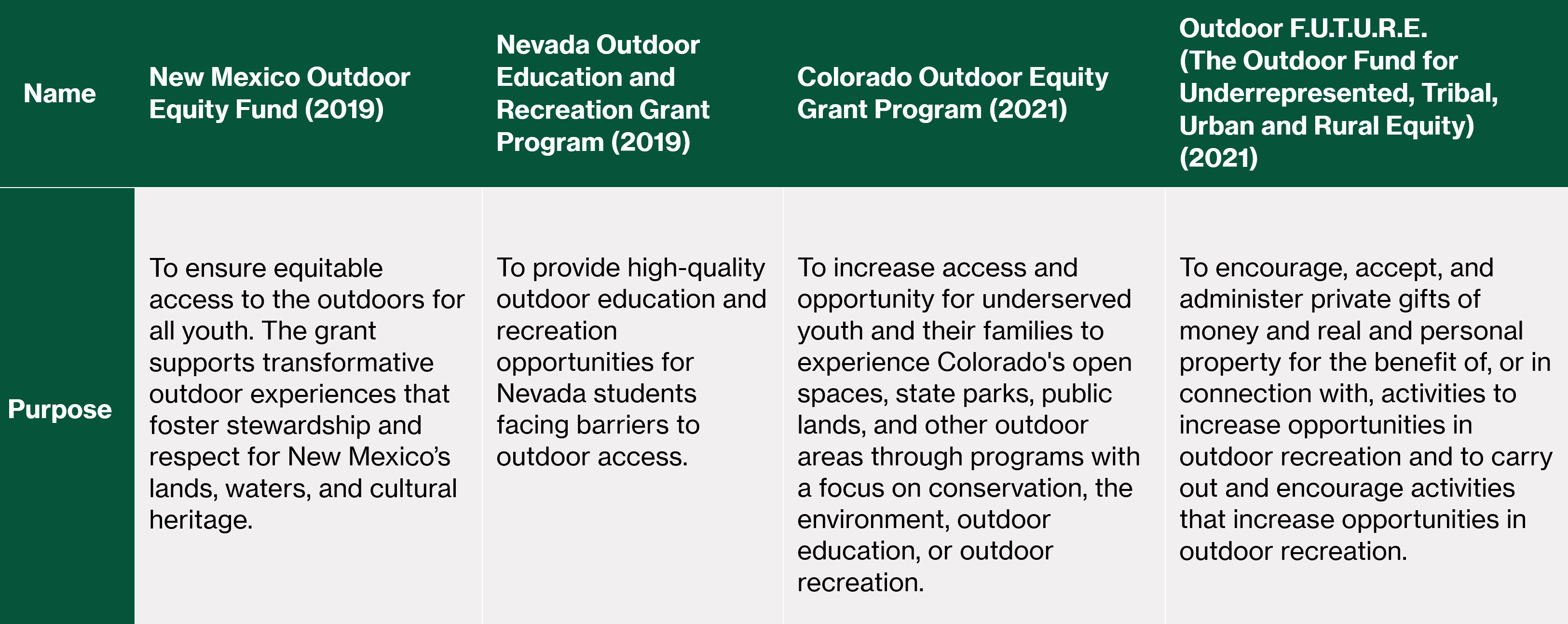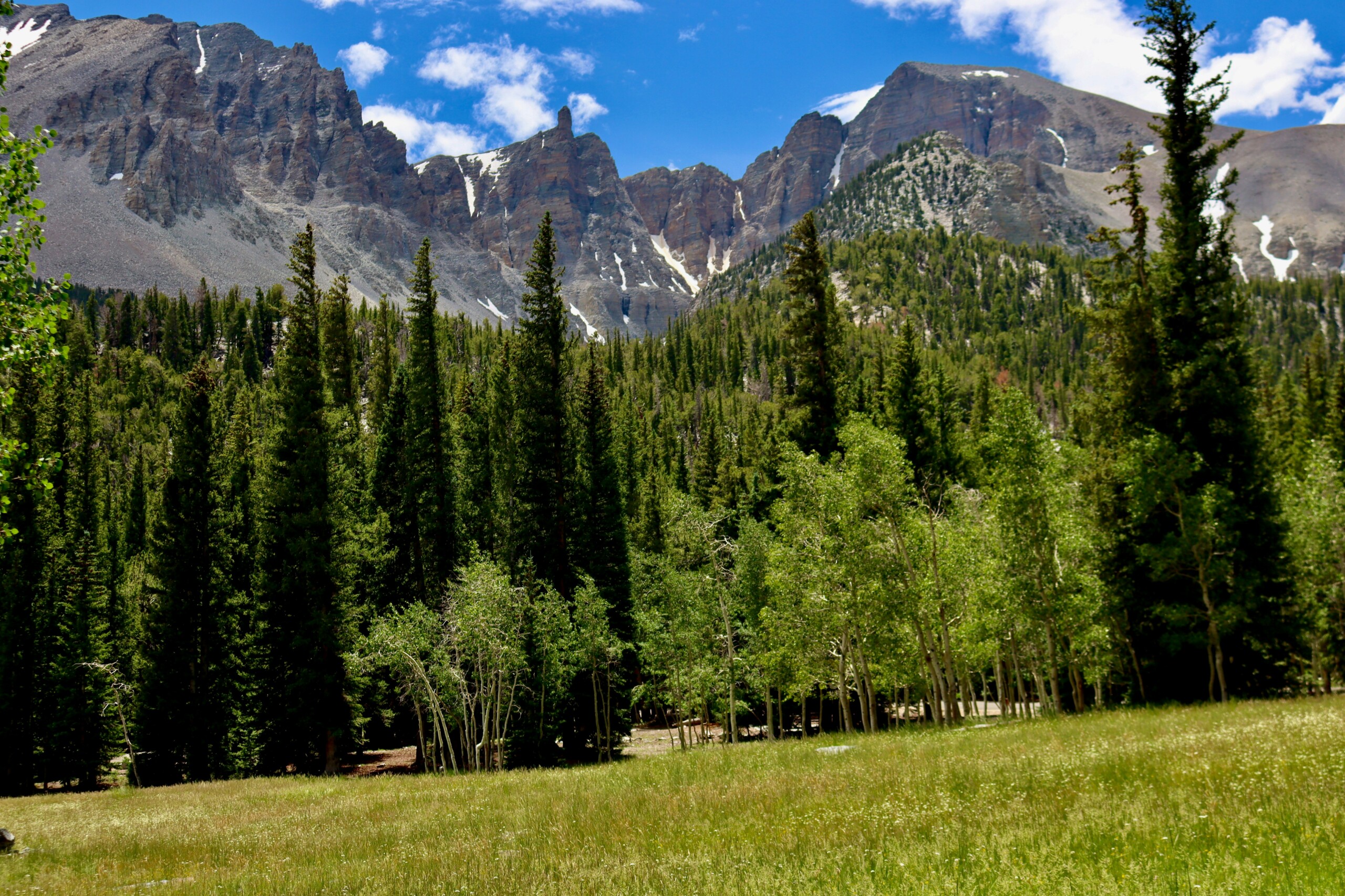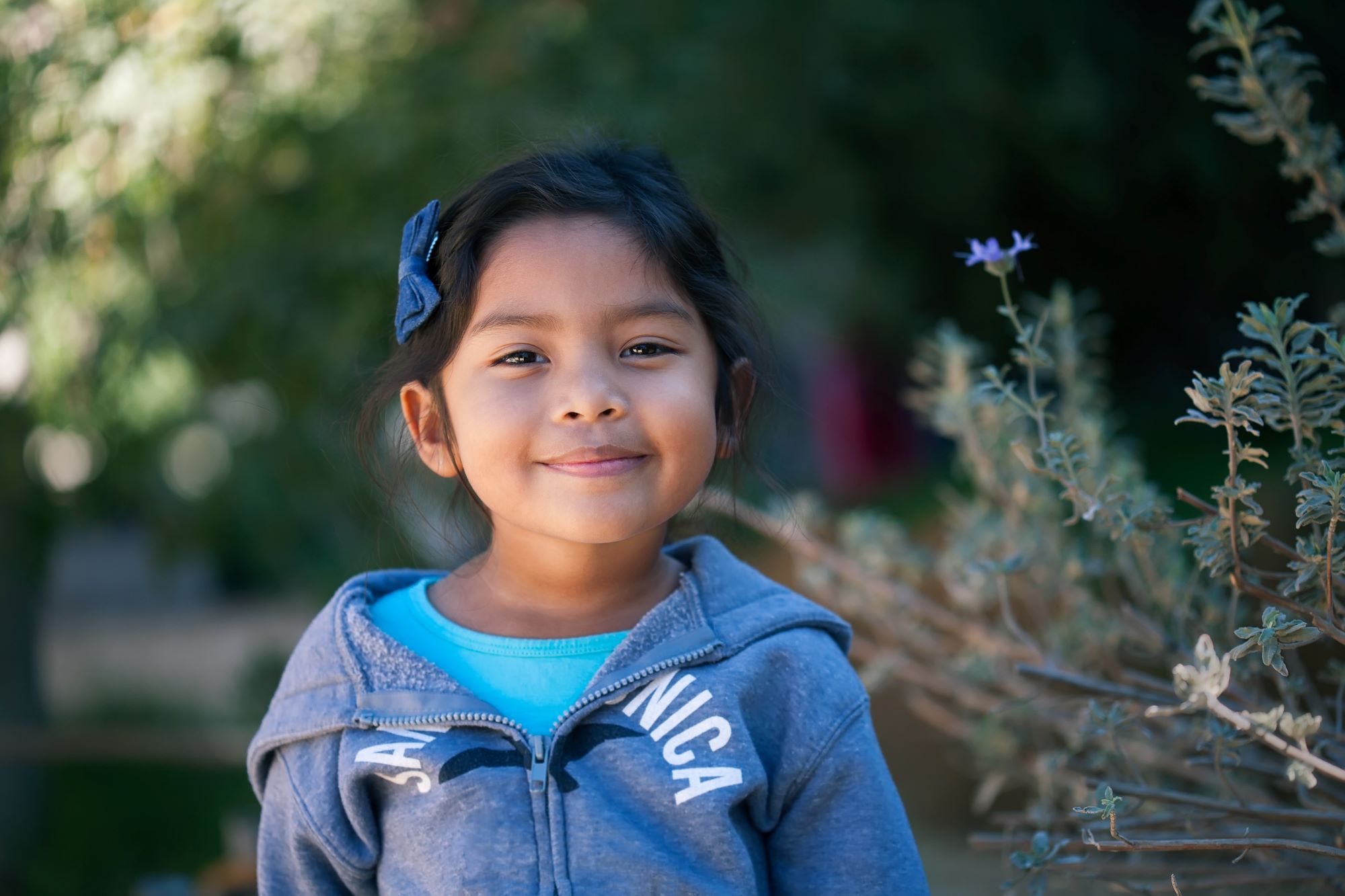January 30, 2024
Outdoor equity funds are a key mechanism to increase access to public lands and recreation. These stated-based grant programs offer resources to organizations that are working to increase access to the outdoors for youth and families from communities that have not historically had equitable access to nature or have not been traditionally served or represented by outdoor recreation entities. While the creation of outdoor equity funds is relatively new, the barriers they seek to address are not.

Barriers to the outdoors
Research shows that there is a nature gap. An American Progress report found that the United States has fewer forests, streams, and other natural places near where Black, Latino, and Asian American people live. People of color, families with children, and low-income communities are most likely to be deprived of the benefits that nature provides. These benefits include things like better health and well-being, connection to each other and to their natural environments, enjoyment through outdoor recreation, and a deeper awareness of the need for conservation. Across the West, the unfortunate reality is many people don’t have access to these benefits of our public lands.
Some of the reported barriers to the outdoors include:
- Proximity to nature areas
- Being uncertain of where to go
- Not having a group or community to get involved with
- Not having enough time
- The cost of required outdoor gear
- Fear of getting lost outdoors
- Fear of wildlife
- Difficulty planning outdoor activities with children
Outdoor equity funds are a start at addressing these systemic problems. These funds seek to combat these barriers while also acknowledging the role that historical and present environmental and social injustices have on outdoor accessibility for these communities. Outdoor equity funds are developed to intentionally provide secure funding opportunities for underserved communities or groups, most commonly youth, for the purpose of increasing their access to the outdoors and natural spaces.
Examples of Outdoor Equity Funds in Western states
Over the last several years, states like New Mexico, Colorado, and Nevada have created their own versions of an outdoor equity fund to address their individual states’ needs.

These examples have been widely successful and have been used as policy models for other state policymakers when developing their own version of an outdoor equity fund. The initial development of the New Mexico outdoor equity fund served as an influential example to other states’ policy development like Colorado and Nevada. However, as seen above, each state has adopted their own version of what an outdoor equity fund looks like for their own communities while maintaining a similar baseline purpose of increasing outdoor access for underserved youth. Some common principles of an outdoor equity fund include:
- Increasing equitable access to the outdoors
- Youth-focused grant program eligibility
- Equitable administration
- Dedicated source(s) of funding
- Connection to outdoor recreation, education, and conservation

Securing New Funding for the Nevada Outdoor Education and Recreation Grant Program
Passed during the 2019 legislative session, the Nevada Outdoor Education and Recreation Grant Program (NOER) was established to provide quality opportunities for Nevada students to experience the outdoors. The program is particularly targeted at underserved communities, low-income families, and communities of color that often face barriers to accessing outdoor spaces through recreation. But for years the program went unfunded. Then, in 2023, WRA successfully advocated for its first-ever appropriation – $500,000 over the biennium.
The NOER program aims to make Nevada’s outdoor spaces inclusive and accessible to all, fostering an appreciation of nature while improving academic achievement and personal wellness. The 2023 grant cycle highlighted a significant demand for the program, with over 60 applications requesting a total of $1.384 million in funding, far surpassing the available $250,000 for the year. This underscores the pressing need for additional funding to meet the high demand and extend the program’s reach.
The positive impact of the program is evident in the 23 awardees selected in 2023, encompassing schools, Tribes, and recreation and conservation organizations statewide, and demonstrating the program’s diverse and widespread influence. Grants ranged from $825 for physical education and health field trips for Innovations High School in Washoe County to $30,000 for learning in and about Great Basin National Park. Another recipient was St. Jude’s Ranch for Children to provide a camp experience for siblings in foster care. (See full list of 2023 NOER grant recipients)
To continue and expand this impactful initiative, increased funding is essential to reach more students and further enrich their educational experiences through outdoor exploration.
A Right to Nature
While outdoor equity funds are relatively new policy initiatives, the purpose of their development has been an ongoing goal for many environmental and youth supporters and advocates. Visiting natural settings and being outdoors are widely recognized as important for improving human health and well-being, enhancing social connections, connecting people with their natural and cultural heritage, contributing to local economies, fostering local or Indigenous identity, and developing a conservation consciousness.
Our public lands belong to all the public. These identified benefits of outdoor recreation should not be limited to those who grew up with established historical family connections to accessing the outdoors or for those who are financially or physically able to travel to public parks or natural spaces. For many, creating an outdoor equity fund is the first step toward working collaboratively to improve access, representation, and meaningful experiences for underrepresented youth and their families in outdoor spaces despite the barriers that have long denied them equitable entry.
Join WRA in our work creating and promoting outdoor equity funds across the West.
Sign your name to let your elected officials know that you support the creation and funding of outdoor equity funds to bridge the nature gap in our communities.


